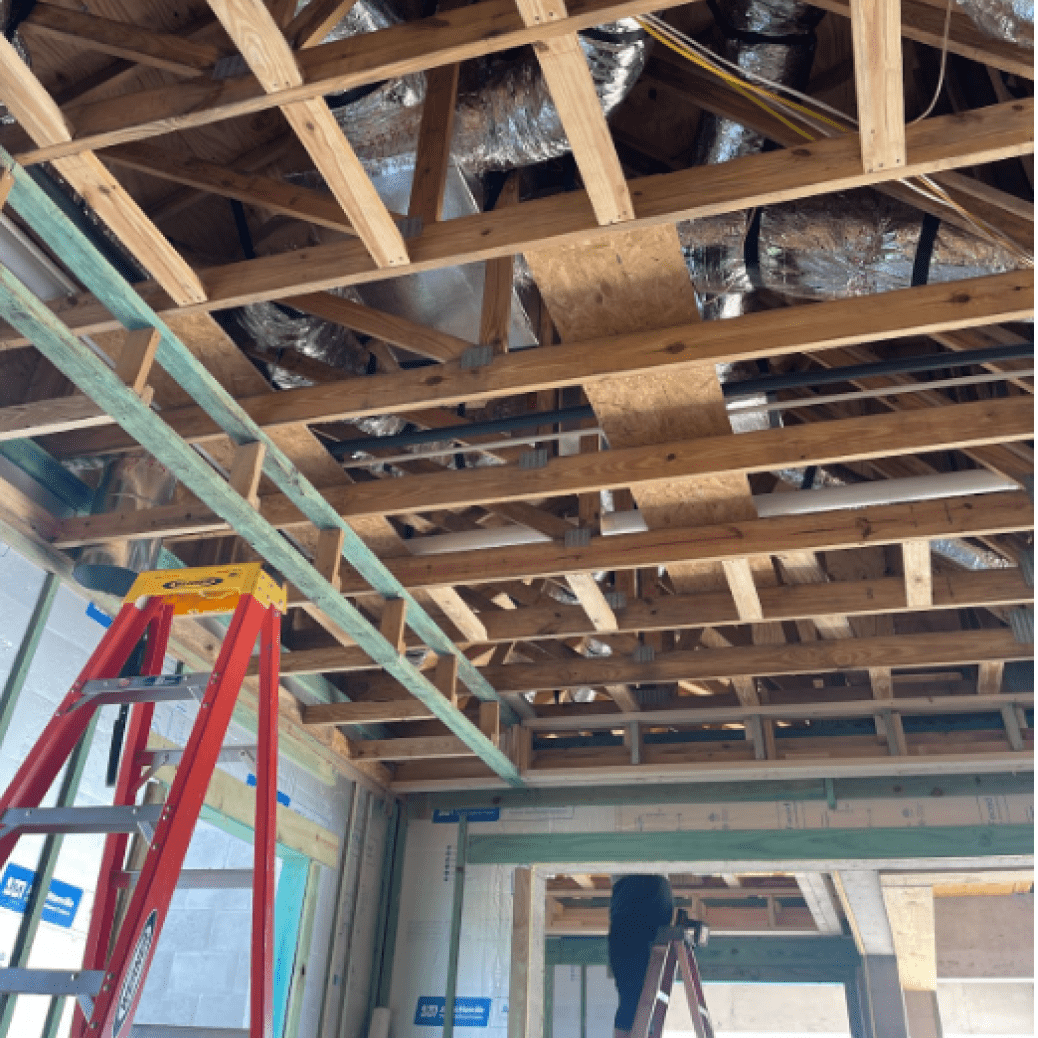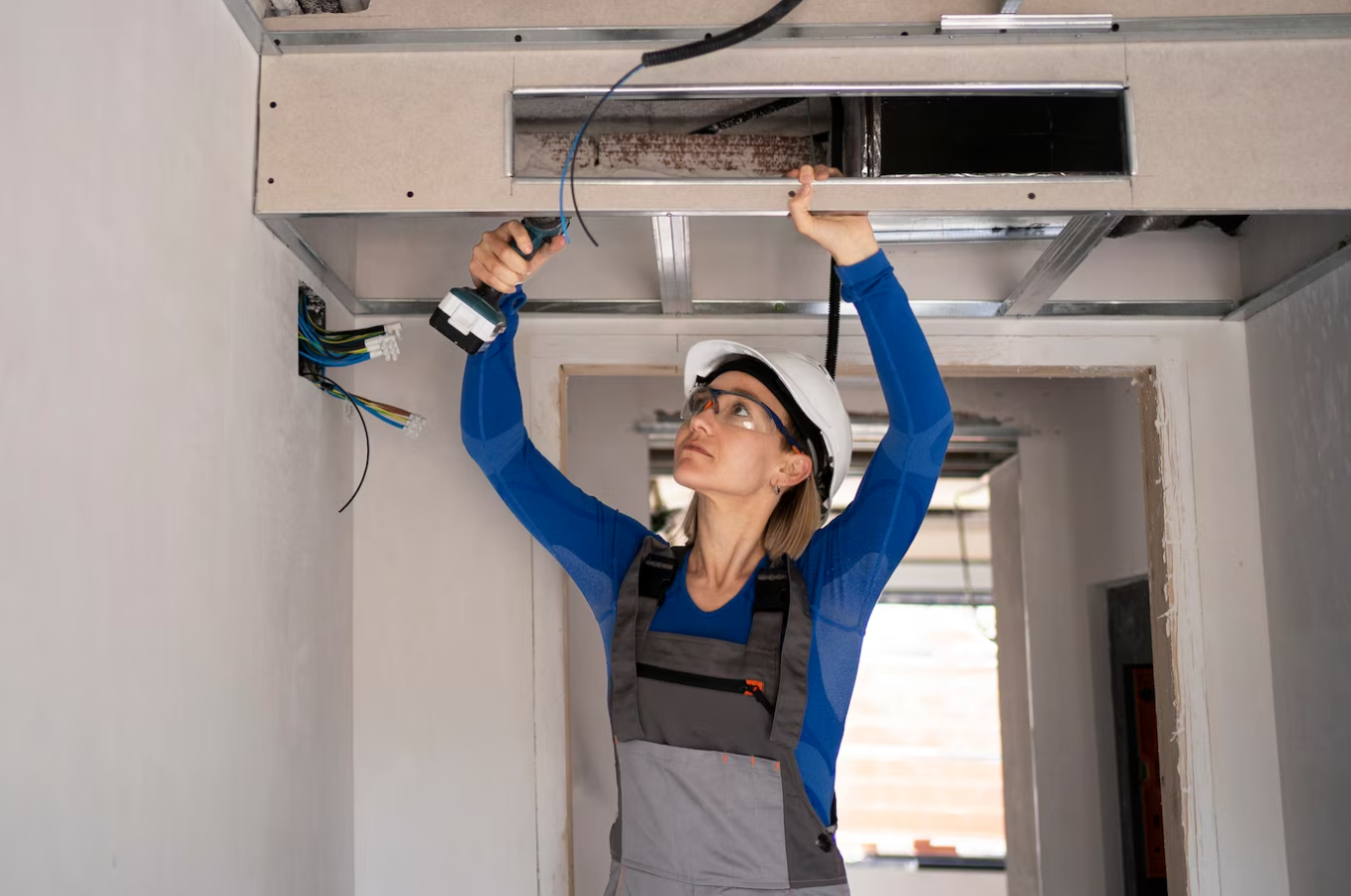Of all the aspects of HVAC installation, ductwork installation happens to be one of the most confusing. How are ductwork designs created? What’s involved in ductwork installation procedures? And how much does it cost?
Without proper ductwork, your existing airflow can affect your comfort and ultimately your health.
If you’re wondering why ductwork matters and what to know when installing new ductwork, you’ve come to the right place.
In this article, our ductwork design specialists will discuss:
- When it’s time for ductwork installation
- Size considerations for ductwork
- Mechanical considerations around ductwork
- The importance of designing ducts with “return airflow” in mind
- Common aesthetic considerations involved with ductwork installation
- The value of choosing a ductwork professional for your next installation
- How much ductwork tends to cost
When it’s time for new ductwork installation

Whether you’re embarking on a new HVAC project or simply doing routine ductwork cleaning, ductwork can affect you when tackling HVAC maintenance or repair work. New ductwork may be needed in any of the following scenarios:
- Your previous ductwork didn’t fit the specs of your home or HVAC system: If sizing calculations are off for your HVAC’s air ducts, you might not be receiving the right amount of power that your HVAC system needs to heat and cool your home.
- You added a new space to your home since your last HVAC and ductwork installation: whether you’re adding a new patio, bedroom, office space, or sunroom, when new areas are built, the ductwork needs to be reconfigured. If not, the existing ductwork won’t be able to handle the heating and cooling needs of the current space.
- You plain just don’t have ductwork: Whether you’ve opted for a ductless mini-split heat pump system, baseboard heating system, or a window unit, you may never have a ducted HVAC system in your home. You’ll need new ductwork if you’re looking for a ducted HVAC system.
- Temperature issues in rooms: have you noticed that certain rooms cool or heat better than others? Checked your air conditioner and heater already and nothing feels wrong? If you answered “yes” to these questions, you may not need HVAC maintenance or repairs but instead need troubleshooting with your HVAC system’s ductwork.
What to know about sizing ductwork for your HVAC system
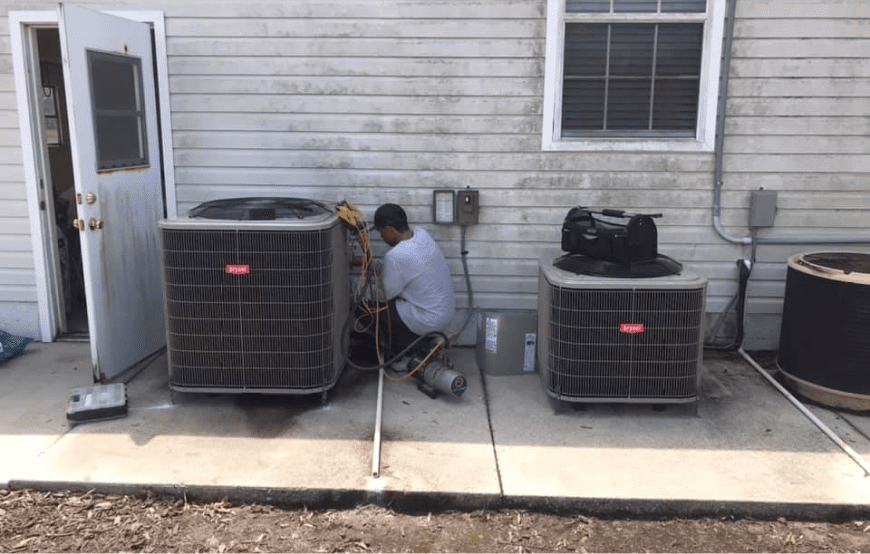
“So, I know I need ductwork. How do I know which size is right for my HVAC system?” You might be wondering.
Alas, many HVAC technicians will give you an answer along the lines of “Check the square footage of your home,” or “Install your ductwork based on the size and power of your HVAC system.”
While these are helpful considerations to keep in mind, the real question is to ask how powerful your HVAC system is. Once you have the answer to this question, you can size out your HVAC ducts.
For example, a 1-ton system is less powerful than a 4-ton system, but the 1-ton system also costs less. Sometimes, a larger home needs more power to heat and cool than a smaller one, but your home may not need a larger system.
Your new ductwork installation also depends on the number, size, and quality of the windows in the house. For instance, older, single-pane windows tend to insulate heating and cooling less efficiently than double or triple-paned windows.
Factors like insulation, ceiling size, and the number of stories in a home all affect the size and cost of new ductwork.
If your system or ductwork doesn’t fit the size of your home, your system won’t be able to produce the right airflow needed to cool and heat your home. If you ignore the need for proper fitting ductwork, you might see increased utility bill costs, your system will run longer, and you’ll likely have airflow only to certain parts of your home.
Mechanical considerations needed for ductwork design

When considering high-quality ductwork design, it’s worth looking at the mechanics and the science behind ductwork installations. The Sheet Metal and Air Conditioning Contractors’ National Association creates and tests standards for ductwork designs and installations across the HVAC industry.
Some of the mechanical considerations that these standards are built upon include:
- Considerations about room size and the amount of airflow running to the room: depending on how large a room is, an air duct must be sized to allow the right amount of airflow to run to and through the whole duct system.
- The trunk line: the trunk line is the main duct that runs through a furnace. It must be able to house the necessary airflow but also must stay within certain height and width dimensions.
- Turns and bends in the home’s infrastructure: Depending on the angles of a home, you’ll need to be very careful about how the air ducts are constructed. Being mindful of 90-degree angles will help you ensure proper airflow to all parts of the home.
Design with “return air” in mind
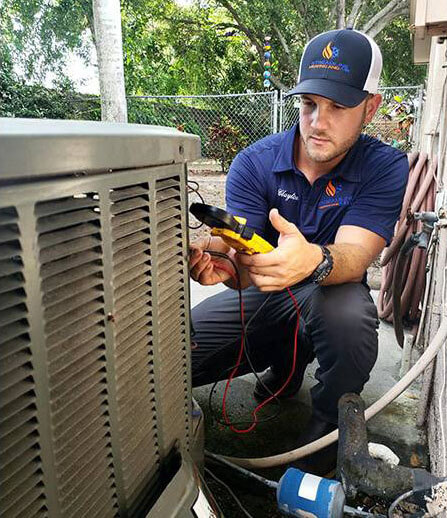
Just like no two homes are alike, the same goes for HVAC ductwork. Proper ductwork is often installed after a home has already been constructed.
So, you’ll often find new ductwork being installed around existing infrastructure. Since HVAC duct systems don’t come as stock systems, your HVAC technician will be able to be a bit crafty and artistic with how they construct the layout of your ductwork.
As such, you might be tempted to do the ductwork installation on your own. Nevertheless, we recommend choosing a professional HVAC technician for ductwork installations.
We’ll explain why in the section below.
Aesthetic considerations for ductwork design

Just like no two homes are alike, the same goes for HVAC ductwork. Proper ductwork is often installed after a home has already been constructed.
So, you’ll often find the new ductwork being installed around existing infrastructure. Since HVAC duct systems don’t come stock, your HVAC technician will be able to be a bit crafty and artistic with how they construct the layout of your ductwork.
As such, you might be tempted to do the ductwork installation on your own. Nevertheless, we recommend choosing a professional HVAC technician for ductwork installations.
We’ll explain why in the section below.
Choose a professional HVAC technician for ductwork installations

We started this article by asking questions like, “Does one room seem to be more humid than others? Is this room hotter than others? Does this room stay colder in winter than others?”
If another contractor isn’t asking you these questions, you’ll likely receive a quote that’s cheaper than what’s warranted for your HVAC needs. As such, when the heating and air conditioner maintenance and repair technician comes back with a cheap quote, many homeowners are tempted to forgo ductwork installations and maintenance.
The homeowner might believe that the air ducts are “good enough” to function, but if you have issues with your ductwork, your HVAC system won’t feel great.
Without asking the above-mentioned questions (which are not all-inclusive, by the way), you might feel less comfortable, your HVAC energy costs might increase, you might experience a shorter lifespan for your HVAC equipment, and you’ll find yourself repairing your HVAC system more often.
Hence, you’ll definitely want to choose a professional who asks the right questions to ensure your HVAC system’ repair needs are addressed best and that your HVAC system works as it should. A professional HVAC technician knows what to look for and has years of experience designing, building, and repairing ductwork to ensure your indoor air feels comfortable and healthy.
How much home ductwork costs

If you’re considering or ready to install new air ducts, consider the costs:
- $200- $400: the average cost of a return air drop replacement
- $1,000- $1,500: the average cost of a new or modified trunk line
- $10,000- $12,000: the average cost of replacing old ductwork or installing new ductwork
Ductwork installation costs vary based on a few factors as well. Factors that affect overall costs include:
- The size of a home and the cost of installation per square foot
- The materials used to construct new ductwork
- The type of ductwork in place (for example, rigid ducting, semi-rigid ducting, and flexible ducting)
- The time of ductwork installation (for example, installing air ducts on an existing home versus on an unfinished home)
- The location of the ductwork (for example, installing air ducts in a basement, attic, or crawlspace)
- The city in which the home resides (installation tends to cost more in urban areas than in rural areas)
Streamline Air ductwork installation: before and after
At Streamline Heating and Air, we’re all about efficient response times, straightforward answers, and quality service.
To see what a new ductwork installation looks like, check out one of our custom, double-wall spiral duct jobs on our Facebook page here!
Proper maintenance is key for long-lasting ductwork
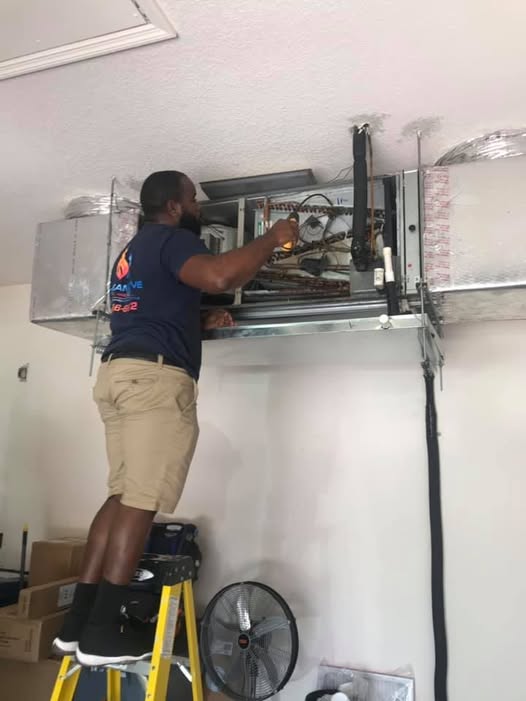
Homeowners: if you’ve learned nothing else from this article, we hope you take away that proper maintenance is key. To ensure long-lasting air ducts and quality air ventilation, you’ll want to conduct regular preventive maintenance.
The trick is to be mindful of airflow.
Maybe you’ve noticed that air flows more consistently to one room versus another. Or, maybe one room is warmer or cooler than another.
At Streamline Heating and Air, our team undergoes rigorous training to be able to assess air ducts so you can make the most of your HVAC investments. If you’re curious about or ready to pull the trigger on new ductwork, can we help?
With the metal HVAC air duct market expected to grow 4.5% each year from now until 2032 (Dataintelo.com, 2025), a professional HVAC crew can help you sift through the data and pick a top-quality, long-lasting, and energy-efficient air duct system.
For a complimentary, in-home estimate, don’t hesitate to contact our crew of licensed and certified HVAC professionals. We’d be happy to help.
Enjoy a more comfortable home with Straightforward Professionals you can trust. We look forward to speaking with you soon!
Meet the Straightforward Professionals at Streamline A/C!

